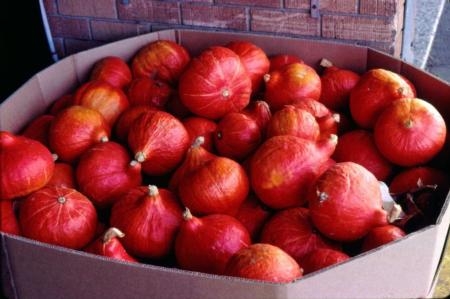The Sacramento Bee ran a comprehensive feature this week about winter squash, drawing information from a variety of sources including UC agricultural research reports.
According to the article, a significant difference between winter squash and summer squash is shelf life. Thin-skinned summer squash - such as zucchini and yellow crook-neck - should be eaten soon after harvest. In contrast, immature winter squash may be eaten during the summer, but can also be allowed to mature, stored for months and eaten in the winter. Winter squash should be harvested before the first frost, cured in the sun for a few days and then kept for up to five months in a cool dry place.
Winter squash retain their sugar longer when stored at room temperature. Chilling degrades the squash.
Research conducted at UC Davis and Oregon State, the article said, showed that most winter squash preferred storage at 50 to 59 degrees, with moderate humidity and good ventilation. Any colder and they went bad rapidly.
Besides their versatility, winter squash are nutritious. For example:
- One cup of cooked pumpkin has just 50 calories, but 2,650 units of vitamin A
- Banana Squash is very high in dietary fiber and a good source of vitamin A and vitamin C.
- Kabocha squash is rich in beta carotene, iron, vitamin C and potassium, plus contains traces of calcium, folic acid and B vitamins.
Bee food writer Debbie Arrington suggests the best way to prepare winter squash is roasting.
Cut the squash in half or into large chunks or slices and remove seeds. Place squash in a baking dish, brush with olive oil or melted butter and roast in a preheated, 350-degree oven until soft (about 30 to 45 minutes, depending on the size of the pieces).
The UC Vegetable Research and Information Center offers winter squash variety recommendations for gardeners and growing instructions.
